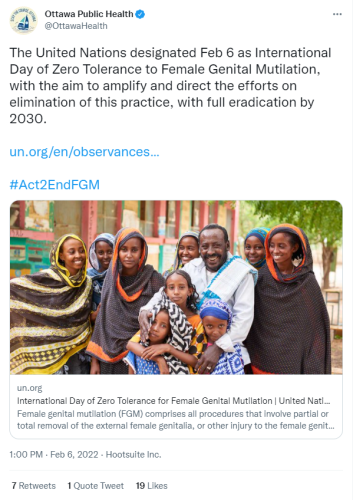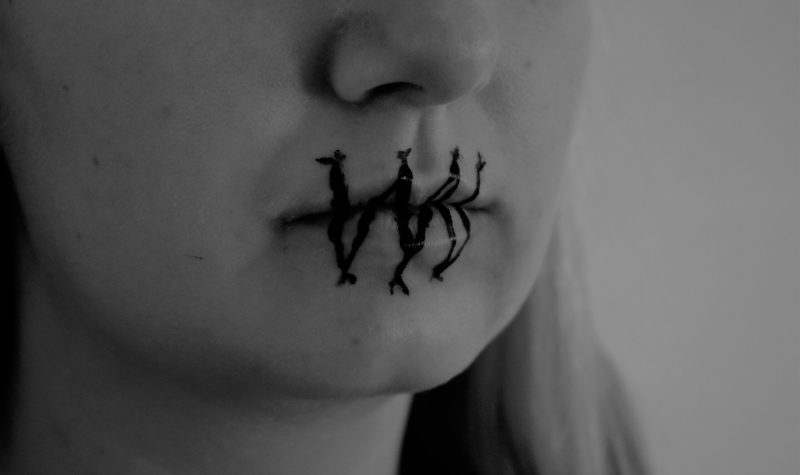On Sunday, Ottawa Public Health (OPH) acknowledged the United Nations’ designation of Feb. 6 as the International Day of Zero Tolerance to Female Genital Mutilation.
In a statement via Twitter, OPH lent their support to the global “aim to amplify and direct the efforts on elimination of this practice, with full eradication by 2030.” The international movement was first introduced by the United Nations in 2012, recognizing female genital mutilation or cutting (FGM/C) as a violation of human rights.

Ottawa Public Health tweeted on Sunday in acknowledgment of the international cause. Photo courtesy of OPH Twitter.
The World Health Organization (WHO) describes genital mutilation as a practice which “involves the partial or total removal of external female genitalia or other injury to the female genital organs for non-medical reasons.” It has no medical benefit, and could lead to complications such as severe pain, infections, urinary problems, and even death.
According to the Ontario Human Rights Commission (OHRC), data concerning the number of people in Canada who practice or have been victims of FGM/C is unclear. Based on “discussions with members of the communities that are at risk,” however, OHRC asserts there is evidence that FGM/C is practiced in Ontario and across Canada.
An organization in Ottawa called Caring for Kids New to Canada estimates that around 125 million women and girls worldwide, many from North and East African countries, have suffered from FGM/C. The country with the highest prevalence of the practice is Somalia, followed by Guinea, Djibouti, Egypt, Eritrea, Mali, Sierra Leone, and Sudan.
According to a report from 2016, Somalia and Egypt were among the most common countries of origin for new immigrants arriving in Ottawa.
Caring for Kids New to Canada says that among some at-risk newcomer communities, support for the practice by parents of daughters wanes following settlement in Canada. But that doesn’t mean support for FGM/C is common in countries where it’s practiced. In fact, FGM/C has been outlawed in 29 countries worldwide, including Somalia, Egypt, Djibouti, Eritrea, Guinea, and Sudan.
It has also been banned in Burkina Faso since 1996, where 76 per cent of women or girls have undergone FGM/C, but only 9 per cent remain in favour of the practice.
FGM/C is often associated with the Muslim faith, but according to Human Rights Watch, it predates both Islam and Christianity. FGM/C is practiced among Muslim, Christian, Jewish and Animist communities around the world, but it is only loosely affiliated with religion, according to Human Rights Watch, which says the practice is more closely rooted in socio-cultural beliefs.
Although FGM/C leads to many harmful consequences, the practice is often performed by a medical professional such as a doctor, nurse, or midwife—and often without the use of an anesthetic.
FGM/C has been a criminal offence in Canada since 1994, and all medical professionals have a duty to report the practice under the policy of College of Physicians and Surgeons of Ontario (CPSO) and under the Child and Family Services Act.
For more information, visit endfgm.ca.
Listen to the CHUO story below:


